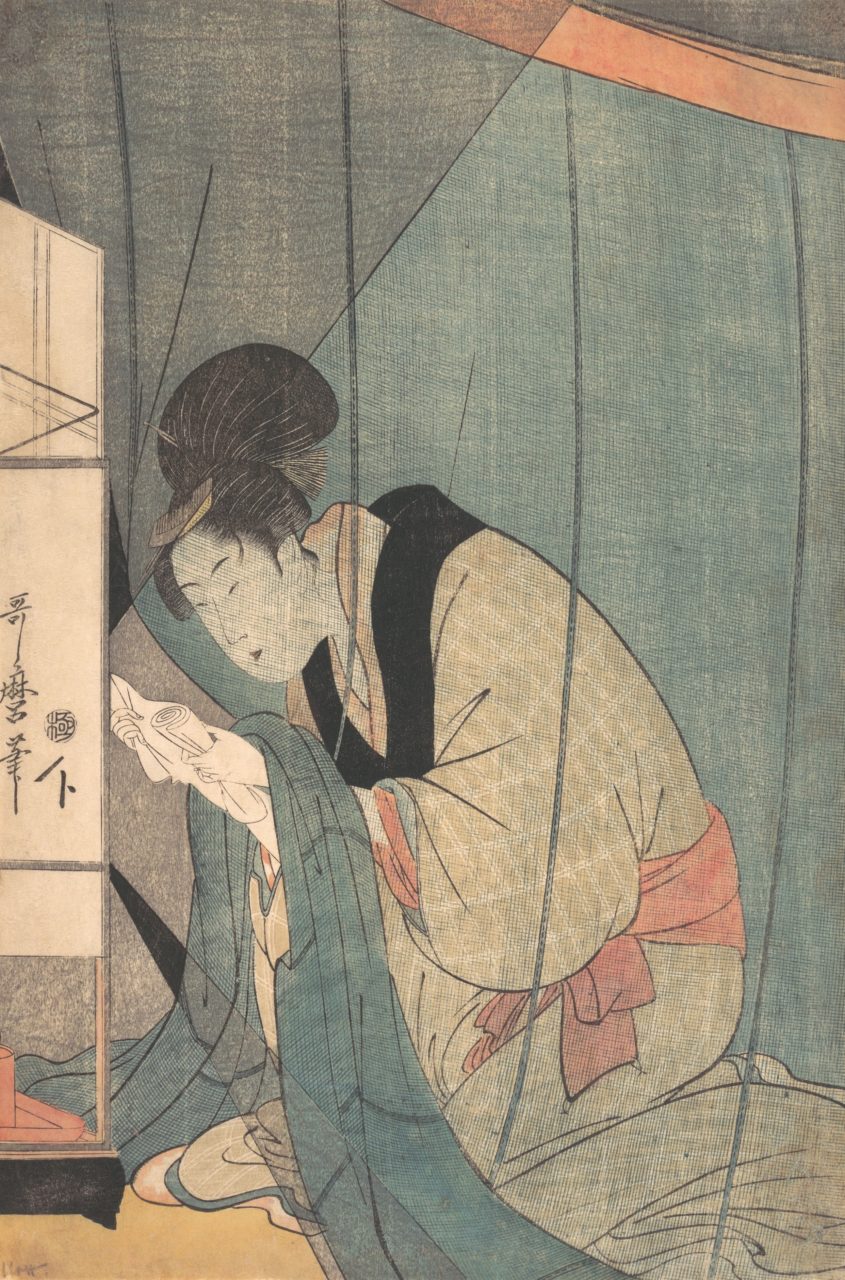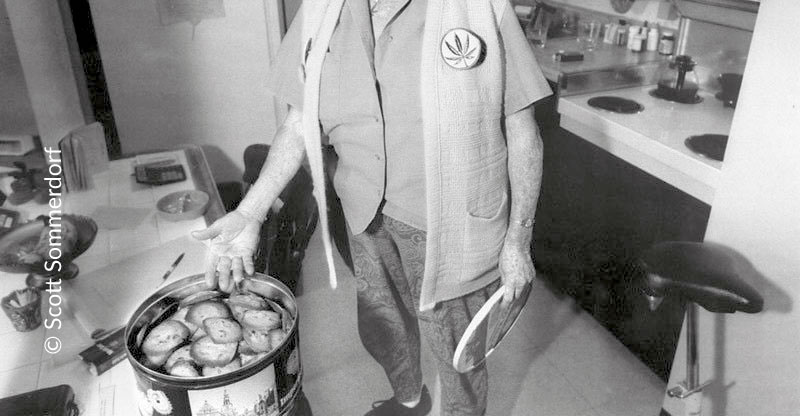
Kitagawa Utamaro, 1798.
Kaya
For a carefree sleep the Japanese depended on a kaya, a box-shaped net made from hemp fibres that offered protection against mosquitoes. Since the mid-18th century, very large mosquito nets surrounded the family’s entire sleeping area, while smaller kaya were hung around individual futons. In order to exclude insects but allow the free flow of air, these handmade hemp nets were comprised of a 1-millimetre mesh. As the mosquito net created subtle effects such as transparency and shadowing, it was a recurrent subject in Japanese art.








